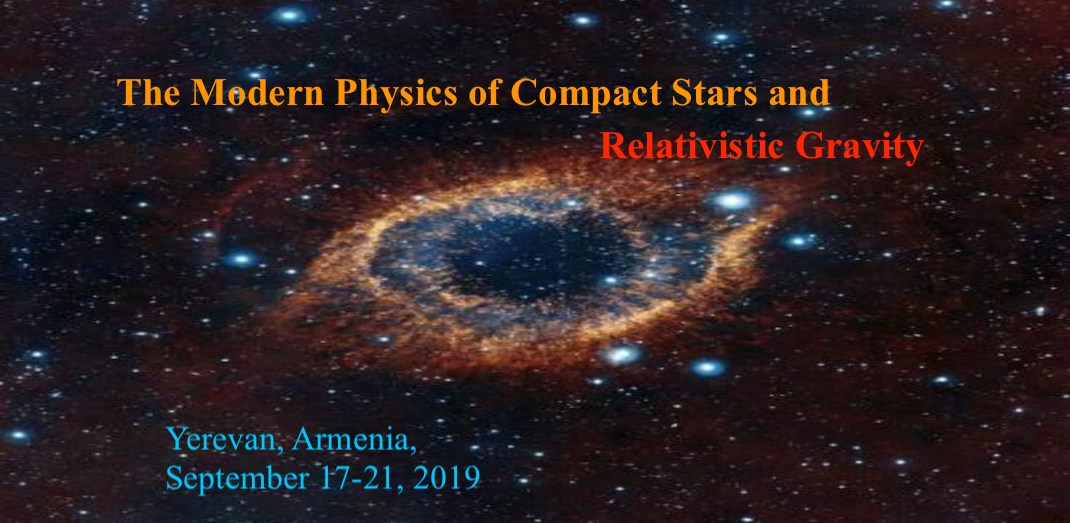Speaker
Description
The high-density behavior of nuclear symmetry energy is the most uncertain part of the Equation
of State (EOS) of dense neutron-rich nucleonic matter [1]. It has significant ramifications in
understanding properties of nuclear reactions induced by rare isotopes, neutron stars and
gravitational waves from various sources. Using a new technique of inverting numerically the
Tolman-Oppenheimer-Volkov (TOV) equation and Bayesian inferences, we show that a firmly
restricted EOS parameter space is established using observational constraints on the radius,
maximum mass, tidal deformability and causality condition of neutron stars [2,3,4]. The
constraining band obtained for the pressure as a function of energy (baryon) density is in good
agreement with that extracted recently by the LIGO and Virgo Collaborations from their
improved analyses of the tidal deformability of neutron stars involved in the GW170817 event.
Rather robust upper and lower boundaries on nuclear symmetry energies are extracted from the
observational constraints up to about twice the saturation density of nuclear matter. Moreover, by
studying variations of the causality surface where the speed of sound equals that of light at
central densities of the most massive neutron stars within the restricted EOS parameter space, the
absolutely maximum mass of neutron stars is found to be about 2.40 Msun. Implications of these
findings on the recently reported mass 2.17 Msun of PSR J0740+6620 [5,6], calculations of the
EOS of dense neutron-rich matter, heavy-ion reactions in terrestrial laboratories as well as the
frequencies and damping times of oscillating modes of neutron stars are discussed [7].
References
[1] B.A. Li, Nuclear Physics News 27, 7 (2017).
[2] N.B. Zhang, B.A. Li and J. Xu, The Astrophysical J. 859, 90 (2018).
[3] N.B. Zhang and B.A. Li, J. Phys. G: Nucl. Part. Phys. 46, 014002 (2019).
[4] N.B. Zhang and B.A. Li, EPJA 55, 39 (2019).
[5] H. T. Cromartie et al., arXiv:1904.06759
[6] N.B. Zhang and B.A. Li, arXiv:1904.10998, The Astrophysical J. (2019) in press.
[7] D.H. Wen, B.A. Li, H.Y. Chen and N.B. Zhang, Phys. Rev. C 99, 045806 (2019)




